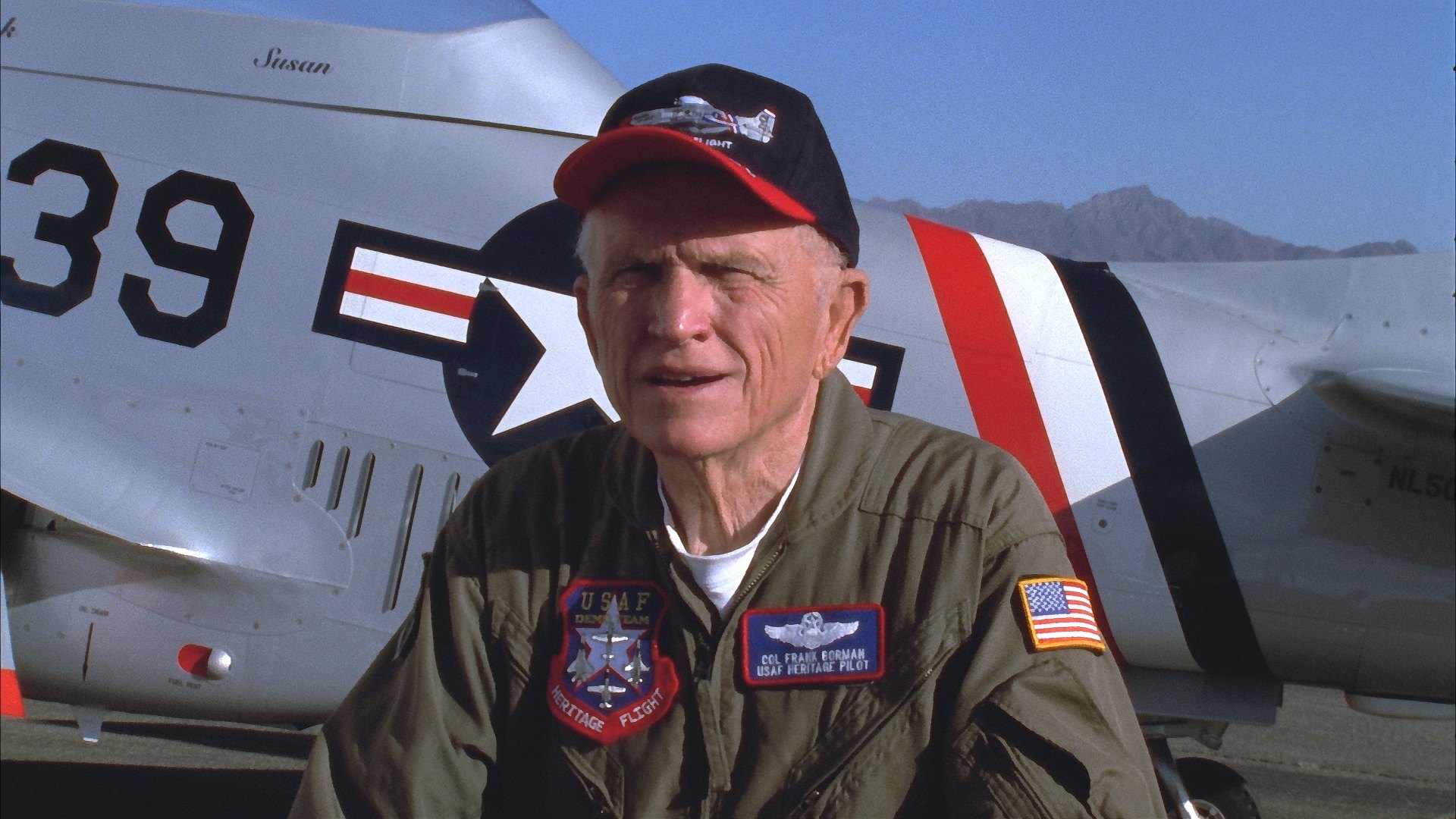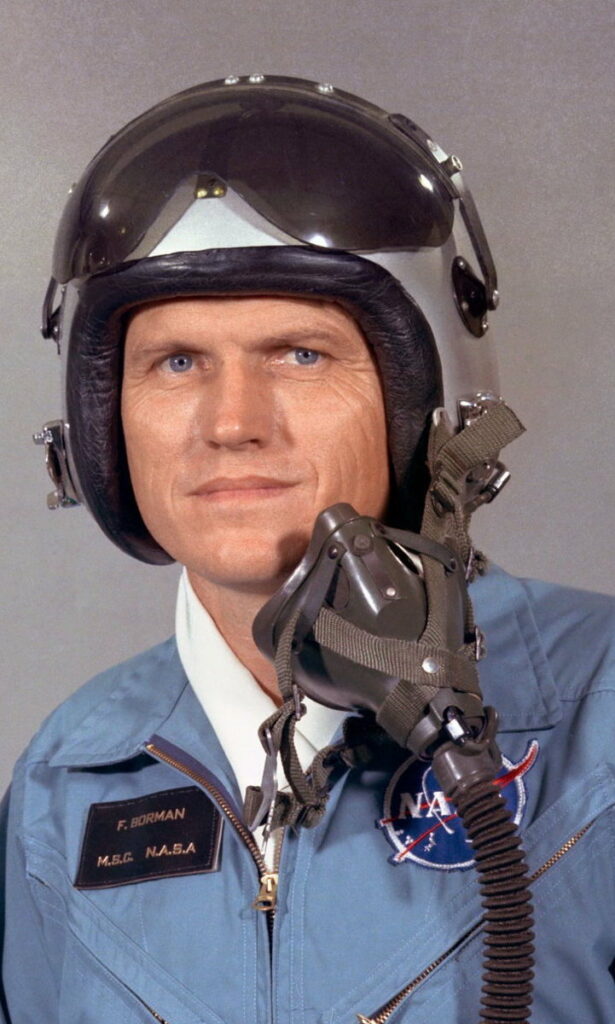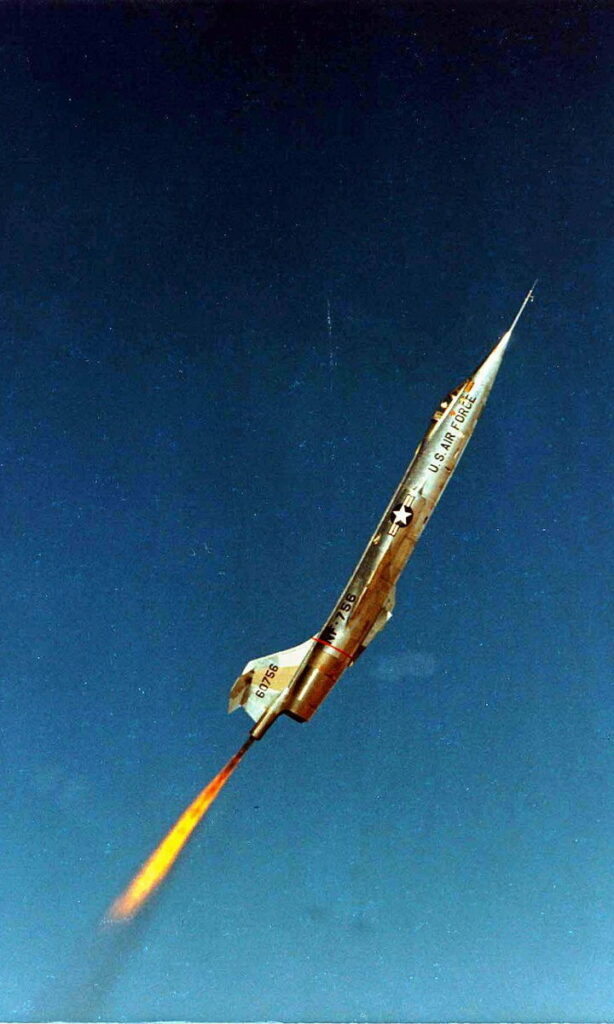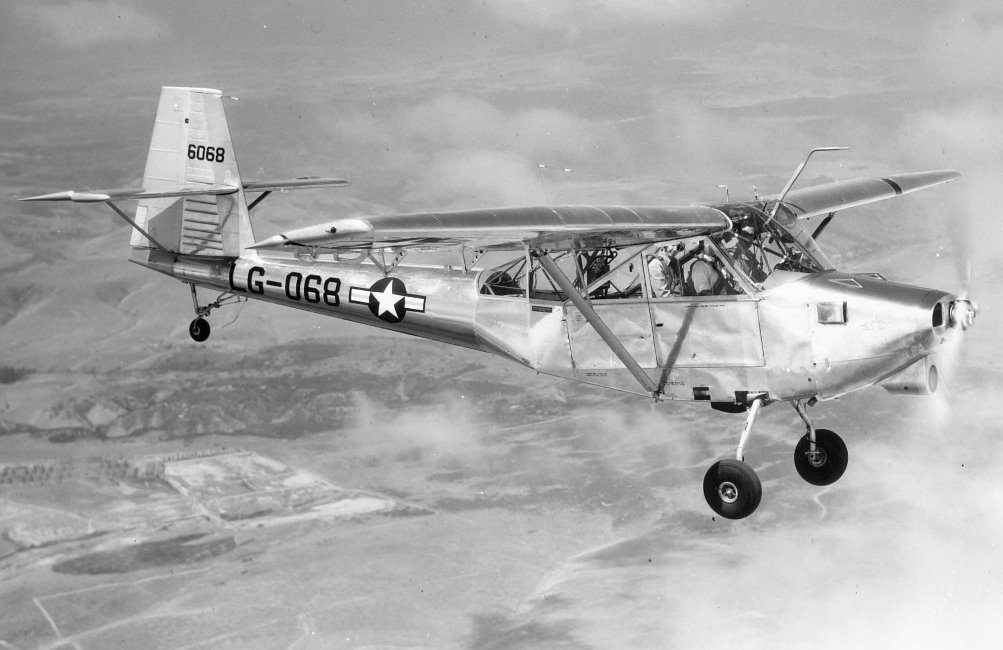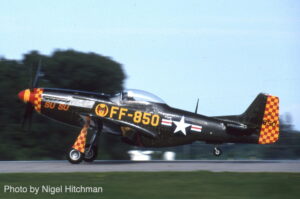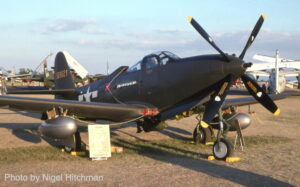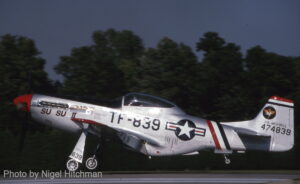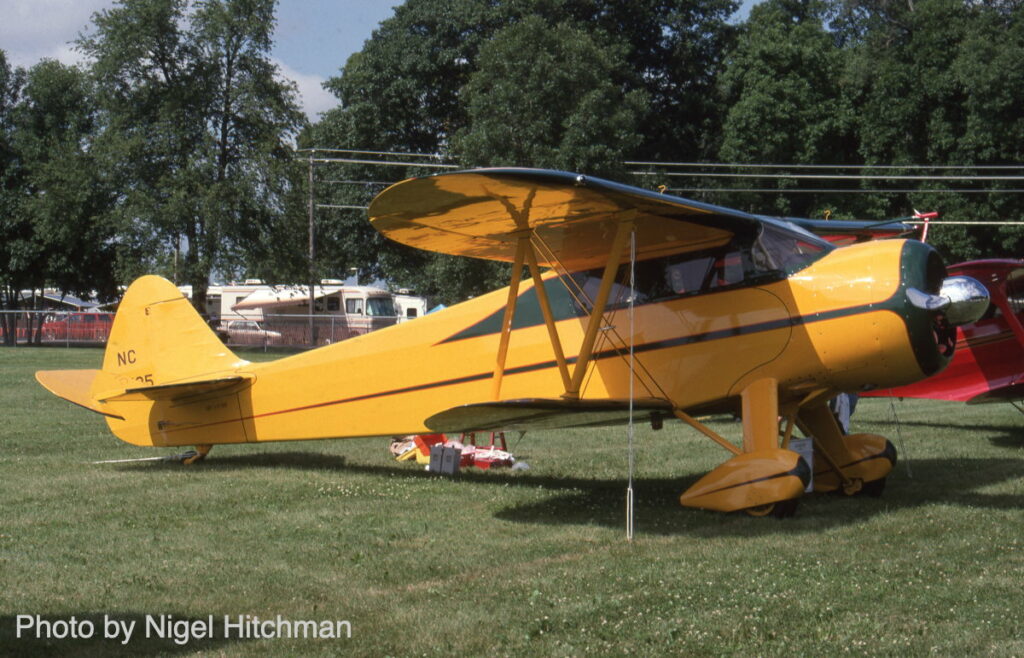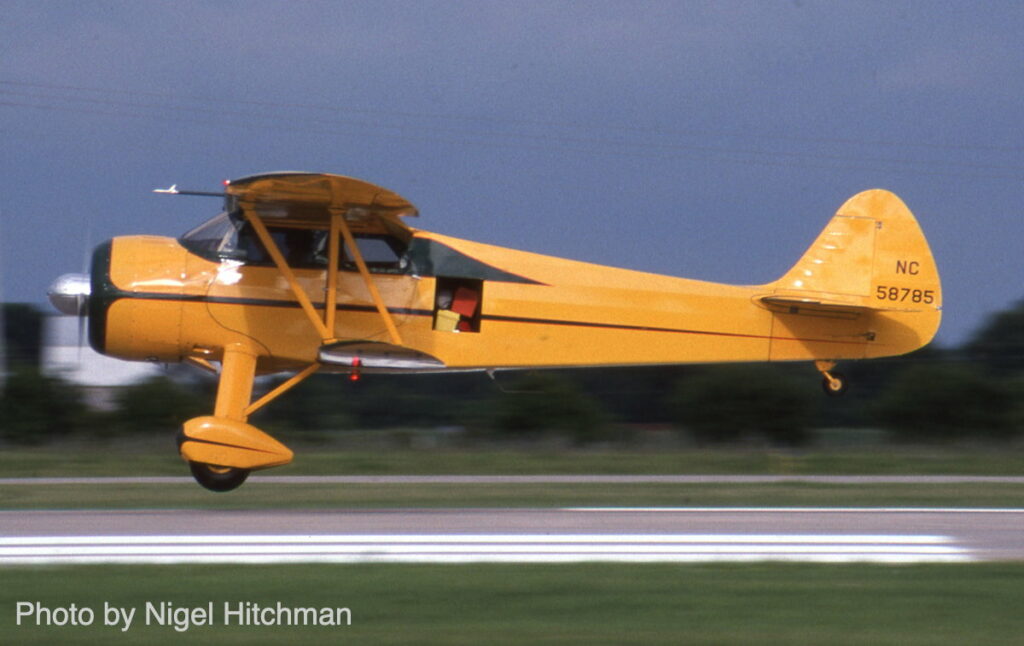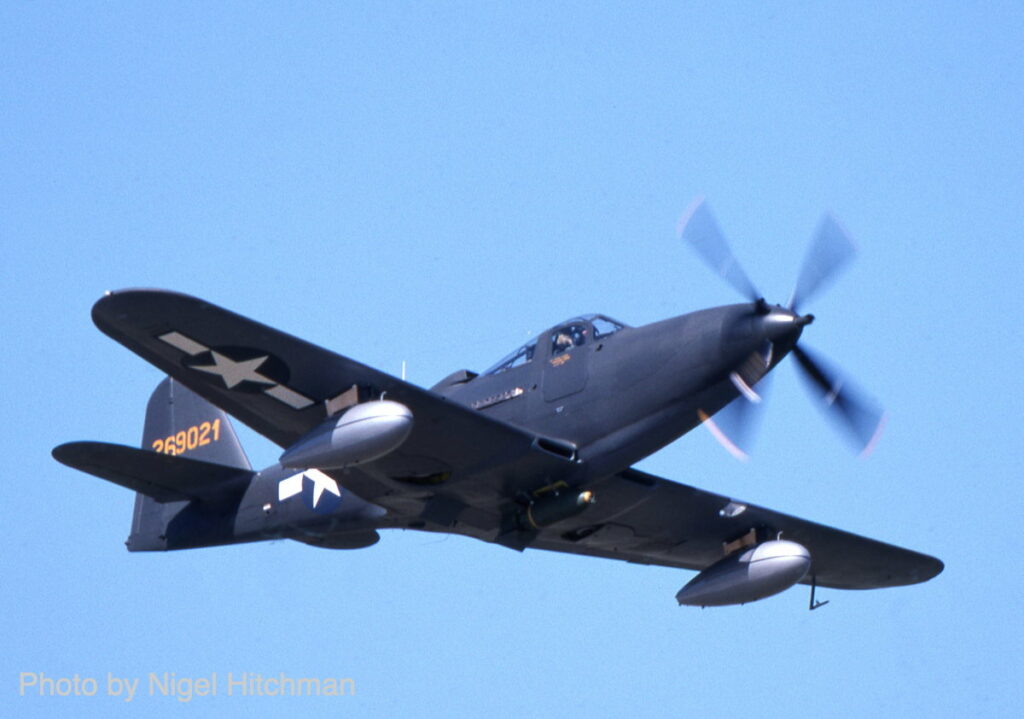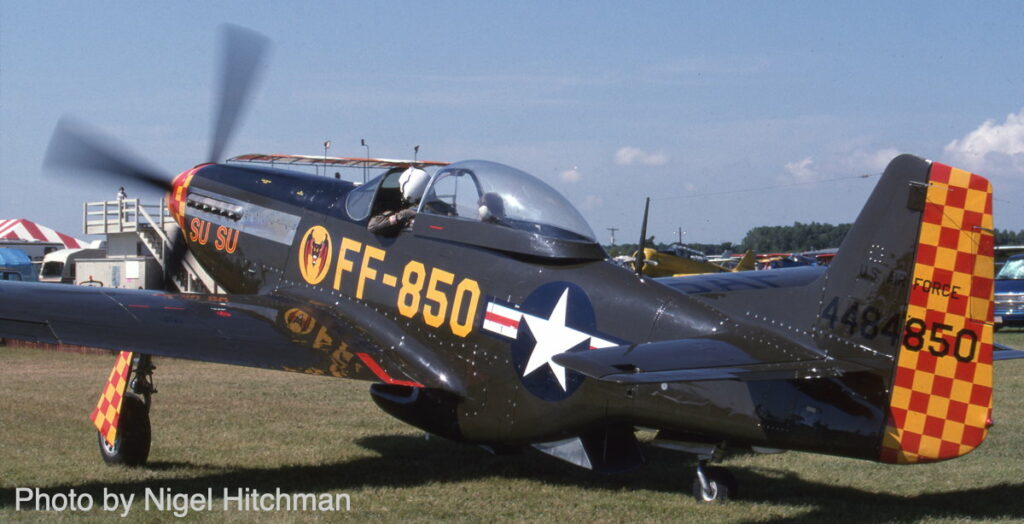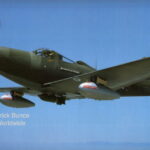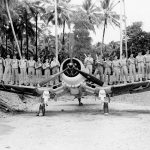By Stephen Chapis.
In the minds of the general public, Frank Borman, Colonel, USAF (Ret), will be remembered as the Commander of Apollo 8, when he, along with Command Module Pilot James A. Lovell, Jr., and Lunar Module Pilot William A. Anders, became the first humans to leave low Earth orbit, to see the Earth as a whole, and to witness and photograph the far side of the Moon. This along with their dramatic reading from the Book of Genesis during a television broadcast from the spacecraft as they orbited the Moon on Christmas Eve 1968, was regarded, as stated in a telegram to NASA as the moment “that saved 1968”.
To warbird enthusiasts, however, Colonel Borman is also remembered as a founding member of the USAF Heritage Flight, and the owner of several meticulously restored warbirds. Simon Brown (of our supporting business Platinum Fighter Sales) who worked closely with Borman said: “If the world had more Frank Bormans, it would be a much better place.”
One might think that a former test pilot and astronaut would predominately fly heavy iron, but one of Borman’s early acquisitions was a rare Convair L-13A utility aircraft, which he owned from 1991 through 1995. Then, of course, no warbird hangar would be complete without the venerable “Pilot Maker” to keep the reflexes sharp, so Borman kept a Harvard Mk.4 on hand from 1991 through 2005. In 1999, Borman briefly owned and flew a product from the other side of the Iron Curtain in the form of an Aero L-39C.
Then there were the fighters. Ever the consummate fighter pilot (in his USAF service, he predominantly flew Lockheed F-80s, Republic F-84s, and swept-wing F-84Fs as well as T-33s) Borman flew a trio of North American fighters throughout the late 90s and early 2000s. They included a pair of Mustangs: P-51D USAAF #44-84850, an ex-Indonesian AF Cavalier (which was the first of Borman’s aircraft to bear the SU SU after his wife Susan) and an Australian-built CA-18 Mustang, serial A68-187. He sold the former in 1996, but the latter, SU SU II, remained in Borman’s care for nearly a decade. His final acquisition was a Sabre, a Canadair CL-13B Mk. 6, C/No 1461 to be specific. Once part of the well-known Flight Systems, Inc, Borman acquired this Sabre in 1999 and flew it extensively until it was passed on to fellow Heritage Flight pilot Ed Shipley. All three fighters were seen by millions while participating in the USAF Heritage Flight. (The Sabre is now with Tom Friedkin’s Comanche Warbirds.)
Into the mid-2000s and beyond, Col. Borman owned at least two other warbirds that bore the SU SU name. Close to the thirty-ninth anniversary of Apollo 8’s Christmas Eve broadcast, Borman was at the shop of Joe VanInwagen at Mercer County Regional Airport (HZE) in Hazen, North Dakota to pick up his freshly painted Cessna L-19 SU SU III. In the December 23, 2007, edition of the Bismarck Tribune, Lauren Donovan wrote:
“‘Does that look beautiful,’ he said strolling around the plane. VanInwagen pasted a red Christmas bow on the side of the plane, which Borman said had looked ‘disreputable. Now it’s amazing.’”
Nearly a dozen years later, again near the Apollo 8 anniversary, Borman was 90 when he was pictured on the cover of the Billings Gazette. In the photo, the nonagenarian Borman was leaning on the wing of his T-34A – and there on the fuselage was the name SU SU IV.
Borman also operated a number of civil vintage types as well as the warbirds, including an executive-configured Waco SRE, NC58785. Others included a Stinson V-77 and a C-45 Expeditor. Many of his team’s aircraft restorations won air show prizes, both his P-51 and P-63 gaining top awards at the EAA Sun n’ Fun show, and the Kingcobra was the Grand Champion Warbird at the Oshkosh air show in 1998. Borman was an EAA Lifetime member, No.300174. (The P-63 is now owned by John Bagley. See our Archive Feature on it from Warbirds Worldwide.) Plans to fly his SIAI-Marchetti SM.1019 to the EAA Airventure in 2008 were sadly thwarted by the weather.
As recently as 2016, at the Heritage Flight Museum, the three Apollo 8 astronauts flew together again, aboard three T-6 Texans. Frank Borman was in the back seat of the first T‐6 (flown by Greg Anders), Jim Lovell in the second (flown by Craig Nelson), and Bill Anders in the third T‐6 (flown by Alan Anders).
His other notable aviation interests ranged from the very big (running Eastern Airlines into profit for a period) and the very small, a pre-air force career as an aero modeler, which he re-started in the 1970s. Professionally, as a CEO of a number of organizations he flew Cessna Citations as well. But beyond that, he was widely known, and now remembered, as a supportive, encouraging, and inspirational leader to many, many aviators over many years.
The news of Col. Borman’s passing was met with great sadness across our nation and around the world, but for Simon Brown of Platinum Fighter Sales, the former General Manager of Square One, who meticulously restored Borman’s beloved P-63 King Cobra [See the feature on that aircraft here] it was especially difficult. In a statement to Vintage Aviation News, Mr. Brown said: “One of the greatest men I’ve ever known. I worked with Frank Borman six to seven days a week from 1995 until 2000. We built a TF-51, P-63, and a F-86 for him. Had so many great adventures with him. Airshows from California to New York, Wisconsin to Florida. We traveled all across the U.S., and went to Germany and the Czech Republic together on business. The most memorable event was him taking me to the Kennedy Space Center in Florida where we got a VIP tour of Cape Canaveral. We kept in regular communication and most recently did a lot of reminiscing about building and flying warbirds. He was a mentor, customer, and friend. Godspeed Col. Borman.”
There were 36 astronauts assigned to the Apollo flight crews. The passing of Frank Borman leaves just eleven, and it would be difficult to name another astronaut who embraced the beauty, power, grace, and nostalgia more the Colonel Frank Borman. Stephen Chapis.







